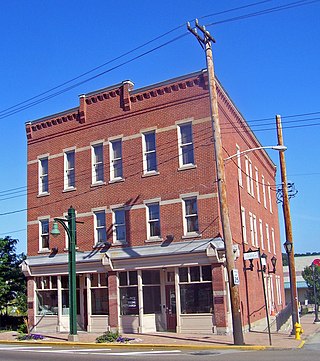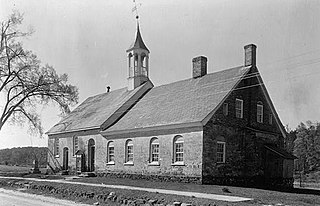
Hercules is a city in western Contra Costa County, California. Situated along the coast of San Pablo Bay, it is located in the eastern region of the San Francisco Bay Area, about 10 miles (16 km) north of Berkeley, California. As of the 2020 census, its population was 26,016, according to the United States Census Bureau. The site of Hercules was first developed in 1881 as a manufacturing facility of the California Powder Works for the production of its patented dynamite formulation, Hercules powder. In 1882, the Hercules Powder Company was incorporated and assumed responsibility for the Hercules site. It was one of several explosive manufacturers that were active along the Pinole shoreline in the late 19th to the mid-20th century. The small company town that grew up near the facility subsequently became known as "Hercules", and was incorporated at the end of 1900. Starting in the 1970s, Hercules was heavily redeveloped as suburban bedroom community that lies along the I-80 corridor in Western Contra Costa County. It has a very ethnically diverse population.

Hazardville is a section of the town of Enfield, Connecticut, in Hartford County. It is a census-designated place (CDP) that had a total population of 4,599 as of the 2010 census.

Mount Union is a borough in Huntingdon County, Pennsylvania, United States, approximately 44 miles (71 km) southeast of Altoona and 12 miles (19 km) southeast of Huntingdon, on the Juniata River. In the vicinity are found bituminous coal, ganister rock, fire clay, and some timber. A major Easter grass factory is located in the northern quadrant of the borough limits; until May 2007, the facility was owned by Bleyer Industries. The population was 2,447 at the 2010 census.

The Staple Bend Tunnel, about 4 miles (6.4 km) east of Johnstown, Pennsylvania, in a town called Mineral Point, was constructed between 1831 and 1834 for the Allegheny Portage Railroad. Construction began on April 12, 1831. This tunnel, at 901 feet (275 m) in length, was the first railway tunnel constructed in the United States. It is rock-bored and stone-lined.

The Cambria Iron Company of Johnstown, Pennsylvania was a major 19th-century industrial producer of iron and steel founded in 1852. The company had the nation's largest steel foundry in the 1870s and was renamed the Cambria Steel Company in 1898. The company used many innovations in the steelmaking process, including those of William Kelly and Henry Bessemer. The company was acquired in 1923 by the Bethlehem Steel Company. The company's historic facilities, extending some 12 miles (19 km) along the Conemaugh and Little Conemaugh Rivers, are a National Historic Landmark District.

A gunpowder magazine is a magazine (building) designed to store the explosive gunpowder in wooden barrels for safety. Gunpowder, until superseded, was a universal explosive used in the military and for civil engineering: both applications required storage magazines. Most magazines were purely functional and tended to be in remote and secure locations. They are the successor to the earlier powder towers and powder houses.

The Bost Building, also known as Columbia Hotel, is located on East Eighth Avenue in Homestead, Pennsylvania, United States. Built just before the 1892 Homestead Strike, it was used as headquarters by the Amalgamated Association of Iron and Steel Workers and for reporters covering the confrontation. It is the only significant building associated with the strike that remains intact. It is a contributing property to the Homestead Historic District. It was declared a National Historic Landmark in 1999.

Bethabara Historic District encompasses the surviving buildings and archaeological remains of a small Moravian community, that was first settled in 1753. Located in present-day Forsyth County, North Carolina, it is now a public park of the city of Winston-Salem. It was designated National Historic Landmark in 1999.
Powder Magazine, Powder House, or Powderworks may refer to:

The George Gordon Meade Memorial, also known as the Meade Memorial or Major General George Gordon Meade, is a public artwork in Washington, D.C. honoring George Meade, a career military officer from Pennsylvania who is best known for defeating General Robert E. Lee at the Battle of Gettysburg. The monument is sited on the 300 block of Pennsylvania Avenue NW in front of the E. Barrett Prettyman United States Courthouse. It was originally located at Union Square, but was removed and placed in storage for fourteen years before being installed at its current location. The statue was sculpted by Charles Grafly, an educator and founder of the National Sculpture Society, and was a gift from the state of Pennsylvania. Prominent attendees at the dedication ceremony in 1927 included President Calvin Coolidge, Governor John Stuchell Fisher, Secretary of the Treasury Andrew W. Mellon, and Senator Simeon D. Fess.

California Powder Works was the first American explosive powder manufacturing company west of the Rocky Mountains. When the outbreak of the Civil War cut off supplies of gunpowder to California's mining and road-building industries, a local manufacturer was needed. Originally located near Santa Cruz, California, the company was incorporated in 1861 and began manufacturing gunpowder in May 1864. For 50 years, it was a major employer in the county, employing between 150 and 275 men. The powder works was located on a flat adjacent to the San Lorenzo River, three miles upstream of Santa Cruz.

The Stephenson Grand Army of the Republic Memorial, also known as Dr. Benjamin F. Stephenson, is a public artwork in Washington, D.C. honoring Dr. Benjamin F. Stephenson, founder of the Grand Army of the Republic, a fraternal organization for Union veterans. The memorial is sited at Indiana Plaza, located at the intersection of 7th Street, Indiana Avenue, and Pennsylvania Avenue NW in the Penn Quarter neighborhood. The bronze figures were sculpted by J. Massey Rhind, a prominent 20th-century artist. Attendees at the 1909 dedication ceremony included President William Howard Taft, Senator William Warner, and hundreds of Union veterans.

The Civilian Conservation Corps Powder Magazine in Capitol Reef National Park, Utah, was used in the 1930s to store explosives for use by Civilian Conservation Corps laborers in the construction of improvements to the park. Much of the CCC's work in the park involved the quarrying of sandstone blocks and slabs, which required explosives. The magazine was built about 1938 in association with CCC Camp NM-2, later called NP-6, located to the west of Fruita at Chimney Rock. The Fruita ranger station and the powder magazine are the only structures remaining from the CCC tenure in the park.

The New Kensington Production Works Historic District, also known as the New Kensington Works and Arnold Works, is a national historic district that is located in New Kensington, Westmoreland County, Pennsylvania.
The CCC Company 741 Powder Magazine Historic District encompasses two structures built by Camp 741 of the Civilian Conservation Corps c. 1936. The camp, the first established in Arkansas, used these structures to store explosive materials used in road and bridge construction projects. The two structures have concrete bases and tops, and have walls of cut fieldstone and concrete. The main magazine is 8 by 16 feet, and the blasting cap storage building is about 10 by 10 feet. The main magazine is located a short way north of Forest Road 177M in Ouachita National Forest; the blasting cap storage building is about 113 metres (371 ft) to its northwest.

The California Powder Works Bridge is a historic covered bridge in Santa Cruz, California. It is a Smith truss bridge, built across the San Lorenzo River in 1872 by the California Powder Works, an explosives manufacturer whose factory complex stood on the river banks. The bridge was designated a National Historic Landmark in 2015 as one of the best-preserved national examples of the Smith truss. It is owned and maintained by the Paradise Park Masonic Club, and is open to pedestrian and vehicular traffic, with a posted weight limit of 5 tons.

The Trojan Powder Company was an American manufacturer of explosives founded in 1904 that made nitro-starch powder. It had a manufacturing complex in Allentown, Pennsylvania, and another facility at Roberts Landing near San Lorenzo, California. The company thrived during World War I (1914–18), continued research and development in the interwar-period, and during World War II operated a large facility in Sandusky, Ohio, under contract to the army. After the war, production scaled back. A facility in Oregon was sold for use by the Trojan Nuclear Power Plant. In 1967 Trojan Powders became a division of Commercial Solvents Corporation (CSC). It was later acquired by the Ensign-Bickford Company.

Apache Nitrogen Products began in 1920 as an American manufacturer of nitroglycerin-based explosives (dynamite) for the mining industry and other regional users of dynamite. It occupies a historic location in Cochise County, Arizona and is one of its largest employers. The company changed its name to Apache Nitrogen Products in 1990.

The Louviers Village Club, in Louviers, Colorado, was built in 1917 and was listed on the National Register of Historic Places in 1995.

The Continental Powder Works at French Creek is a historic gunpowder manufacturing complex in East Pikeland Township, Chester County, Pennsylvania. Constructed on French Creek in early 1776 and intended to supply the Continental Army during the American Revolutionary War, the mill was the only powder mill and gun factory commissioned by the Continental Congress. Designed to produce two tons of powder per week, the complex contained a dam, mill race, powder mill, graining mill, saltpeter house, four drying houses, powder magazine, a house for superintendent Peter De Haven, and barracks for militia guarding the facility. British troops burned the complex in September 1777, but the site continued to be used as a mill into the 1800s.
Unfortunately the plant as of 3/6/2015 is being torn down and completely dismantled






















